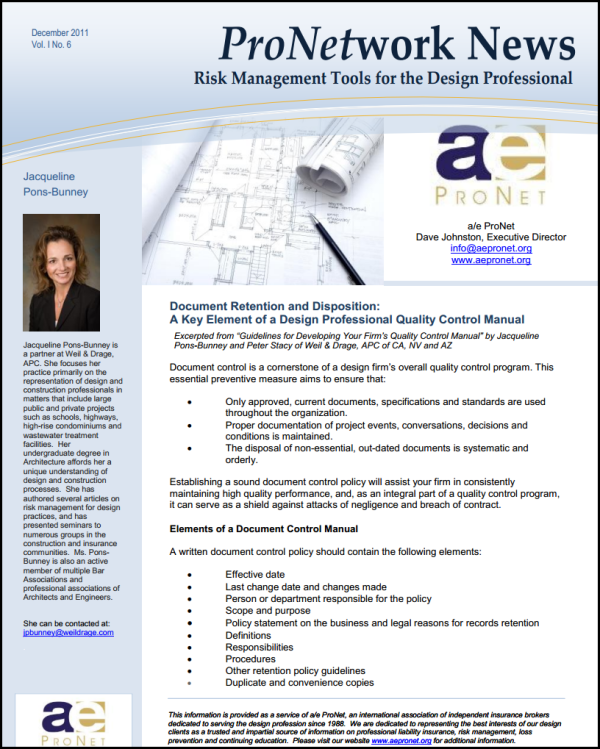 Risk Allocation is an important part of the contract negotiation process for Architects, Engineers, and other Design Consultants.
Risk Allocation is an important part of the contract negotiation process for Architects, Engineers, and other Design Consultants.
“In allocating risks by contract terms and conditions, the goal is to allocate the specific risks to the party with the best ability to manage them. Although a contract can assign ownership of risks to any party, there can be serious adverse consequences if a party assumes risks it can’t manage. A design firm, for example, isn’t in a position to manage site safety responsibilities that most appropriately belong to the construction contractor. Despite the practicalities, however, of who is actually in the best position to manage site safety, if the design firm agrees to such responsibility by contract, the designer may be found liable for site safety by courts and possibly the Department of Labor.
“To be reasonable, a contract must be reasonable for all parties involved. If a contract attempts to shift all the risks to one party or the other, it will create problems on the project. A one-sided contract is likely to cause hard feelings during contract administration. It may also increase the likelihood of claims turning into litigation. As a practical matter, this means parties are better served by negotiators who don’t try to negotiate a contract that unreasonably shifts risk to someone who can’t logically manage it or accept legal responsibility for it. Such risk transfer will cause problems in the long run, and may even create uninsurable losses and claims.
“In evaluating who the various risks should be assigned to, parties can develop a table or list of responsibilities and risks to more easily see which risks most logically belong to each party. For example, site safety typically falls to the construction contractor. Easements and rights-of-way, as well as site data, including geotechnical information, may logically be allocated to the project owner. Responsibility for exercising due care in the planning and designing of a project generally falls to the design professional performing those services.
“Problems begin when any of these risks are allocated to the party that is not technically responsible for the related services. Unless you are in a position to manage a particular risk, it is not appropriate for you to accept contractual liability for that risk.”
This is an excerpt from a/e ProNet’s Risk Management & Contract Review Guide for Design Professionals (© Copyright 2006; a/e ProNet & J. Kent Holland, Jr.), one of the many resources ProNet Member Broker’s provide to their clients. A digital version of the full guide is available for purchase ($19.99). Contact a/e ProNet today to get in touch with your local ProNet broker.
About the Author: J. Kent Holland is a construction lawyer located in Tysons Corner, Virginia, (formerly with Wickwire Gavin, P.C. and now with Construction Risk Counsel, PLLC) representing design professionals, contractors and project owners. He is founder and president of a consulting firm, ConstructionRisk, LLC. He is also the author of Contract Concerns, a series of articles available on our website here.

